Arkansas: A Six Region Journey
"Arkansas: A Six Region Journey" provides a unique multi-media exploration of each of these regions. Arkansas's rich and diverse areas presented: the Ozark Plateau region; the Arkansas River Valley; the Ouachita Mountains; the Gulf Coastal Plain; the Mississippi Alluvial Plain; and Crowley's Ridge.
The project showcases Arkansas's diverse agriculture and crops, regional economies; the distinctive geography and geology of each region, and a broad look at the areas that make Arkansas the rich and varied land and culture it has been throughout its history.
The Arkansas Department of Education partnered with Arkansas PBS to meet the professional development needs of K-12 licensed educators by offering research-based and technology-delivered professional development courses. These courses are designed to expand the teaching knowledge and skills of Arkansas educators. This project includes an online professional development course and classroom resource materials for Arkansas educators.
Regions
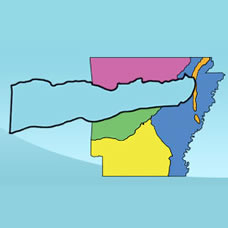
Arkansas River Valley
The Arkansas River Valley is the area carved by the river long ago. This 40-mile wide trough divides the Ozark and Ouachita Mountains. Most of Arkansas's larger cities can be found in the river valley-Fort Smith, Little Rock, and several others.
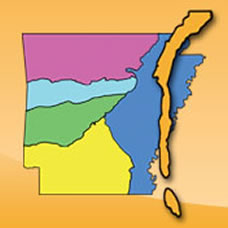
Crowley's Ridge
Crowley's Ridge is an exciting untapped region with a diverse role, in addition to, a unique crescent-shaped formation, which makes it the most distinctive feature of the landscape of southeast Missouri and northeast Arkansas. The region is moderately fertile and its oak and hickory forests are similar to the Ozarks. Many mountain ferns and flowers can be found there, including the American bellflower, crimson catchfly, and yellow jasmine. It is the to small farms, extensive pasture lands, orchards, county seats, and a source of history and culture. Join us as we explore the natural history and the artistic culture of this important transportation scenic route.
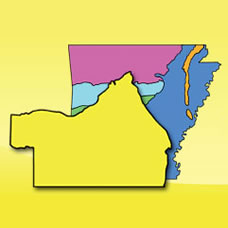
Gulf Coastal Plain
The definition of a Coastal Plain is any flat, low-lying area geographical region near the sea. What if I asked you to take a trip with me to a coastal region… what part of the country do you think we'd be going to' Either the Atlantic Ocean on the east coast or the Pacific Ocean on the west coast, right' What if I then added, let's go to the coastal region in L. A.' Then of course you would think we were going to the west coast and the Los Angeles area. No. What if I added, a southern coastal region in L. A' Then of course I must mean LA, the state postal code for Louisiana, and the Gulf of Mexico' No, what I mean is the coastal region in Lower Arkansas, or 'L .A.,' as it is called by its inhabitants. And how does Lower Arkansas come by the name 'the Gulf Coastal Plain region'' It's not a geographical region near a sea. But it was millions of years ago. These are just the many mysteries you will learn about the Gulf Coastal Plain region. From ocean to boomtown… it is rich in minerals and history, and as with its past the future is sure to be very interesting. And now that I've whet your thirst for more knowledge of this fascinating coastal plain lets dive into region in more detail.
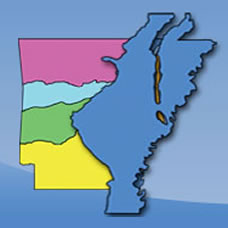
Mississippi Alluvial Plain
The Arkansas Delta - part of the Mississippi Alluvial Plain - encompasses some ten million acres of land and stretches from Eudora in the south to Blytheville in the north and as far west as Little Rock. Although the name 'Delta' is often indiscriminately applied to most of eastern Arkansas, the area is composed of five distinct regions. The St. Francis Basin, Crowley's Ridge, the White River Lowlands, the Grand Prairie, and the Arkansas River Lowlands. The Arkansas Delta, blessed with rich and fertile soil, is one the most productive agricultural regions in the world. Its fields are filled with lush crops of cotton and rice, soybeans and corn. The Delta's history-like its geology- was shaped by the great rivers that flowed and flooded through the land- the Mississippi, the Arkansas, the White, the St. Francis and others. Learn how many residents and former residents of the Delta are making an effort to revive and preserve its rich cultural tradition, and make it a place where people can raise families and prosper.
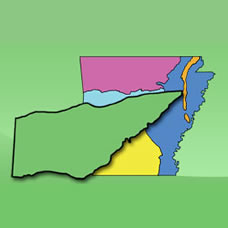
Ouachita Mountains
Are you ready to journey beyond your imagination' Adventures in the Ouachita Mountains will lead you to crystal-clear creeks, and beautiful rock formations and bluffs along with an exhilarating and impfortant time of learning the regions vibrant and vivid history and culture. The Ouachita Mountain region is a mountainous, geologically complex area located between the West Gulf Coastal Plain region to the south and the Arkansas Valley region to the north. There is no recipe for making the rugged and beautiful scenic Ouachita Mountains what it is, but the abundant natural resources, interesting and important historical sites makes the exploration of this region worth your while.
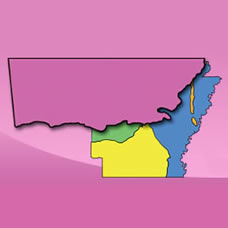
Ozark Plateau
"The Ozarks." The words conjure up easy images of a certain kind of place with a certain kind of people. Mostly, the images depend on what someone has experienced in the Ozarks, or what they might have heard. If you attended "the University," Ole Main and Dickson Street may come first to mind. For Razorback fans, the stadium, the field house, and a pleasant drive through the mountains may define the Ozarks. People who love the traditional culture will know about Mountain View and other places where the old music and the lore can be found. A few years ago, an aspiring entrepreneur would probably not have seen the Ozarks as a place for building a fortune, but anyone who knows today's economic realities knows about the Fayetteville-Bentonville corridor. Anyone looking for the old, cliché monoculture of Ozark legend will be surprised to see that ethnic diversity has begun to spread across the region. The one or two traditional images of the Ozarks have become a kaleidoscope, but some basic facts remain in place. "The Ozarks" is a hill country and those who thrive here have found a way to adapt to its challenges and make the most of its opportunities. What will remain, within a few more decades, of the unique character of the Ozarks both the physical and the cultural Ozarks As every educator knows, the people who now sit in Arkansas's classrooms will settle those questions. Therefore, we offer you a closer look at the region known as the Arkansas Ozarks.
Frequently Asked Questions
-
Am I allowed to use this material in the classroom?
Other than the online professional development course, these classroom resource materials are available at no charge and may be used in the classroom. Resources include: Video clips, PowerPoint presentations by grade level, Scholar interviews, Maps, and Lesson plans. These materials are available for each region. In addition, a statewide classroom poster of the regions is available.
-
Am I allowed to take the professional development course?
The online professional development course is available to certified Arkansas teachers. If you are a registered user of the Arkansas IDEAS professional development courses, you can take the course through the regular enrollment process at the IDEAS LEARN NOW site.
If you are a new user, contact your school's appropriate staff member to receive your user name and password for first-time entry. The Arkansas IDEAS help desk will be glad to assist you if you have any problems. You may reach the help desk by calling (501) 852-2806 or 1-800-488-6689. You may also visit the IDEAS registration information at ideas.aetn.org.
Be sure to check with your school or district administrator to determine if this course will be accepted and credited to you by your school or district.
-
Is there a charge for this course?
There is no charge for eligible Arkansas educators.
-
Are students allowed to use these materials?
You and your students to explore the geographic regions of Arkansas may use these resource materials. The sites and their links are resource-rich and may lead you to a vast array of information. If you will be using the materials for classroom presentations, papers or other presentation, proper credit should be given.
-
As a certified Arkansas teacher, how much credit would I receive for taking the online course?
The online course consists of six individual courses, one for each of the regions. Each of these individual courses has ADE (Arkansas Department of Education) approval for 2 credit hours of professional development in Arkansas History. If you take all the courses, the total is 12 hours of professional development credit.
As with all professional development courses, allowing in-service credit is at the discretion of the superintendent, principal or other official designated by your district/school. Although courses have been approved by ADE as appropriate for professional development, you will still need to confirm the credit status of the course at a local level.

